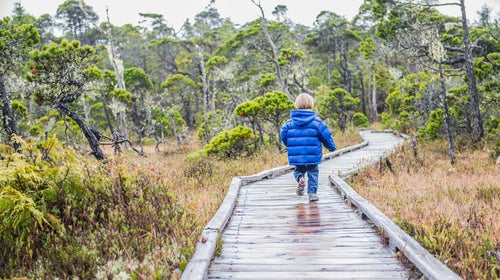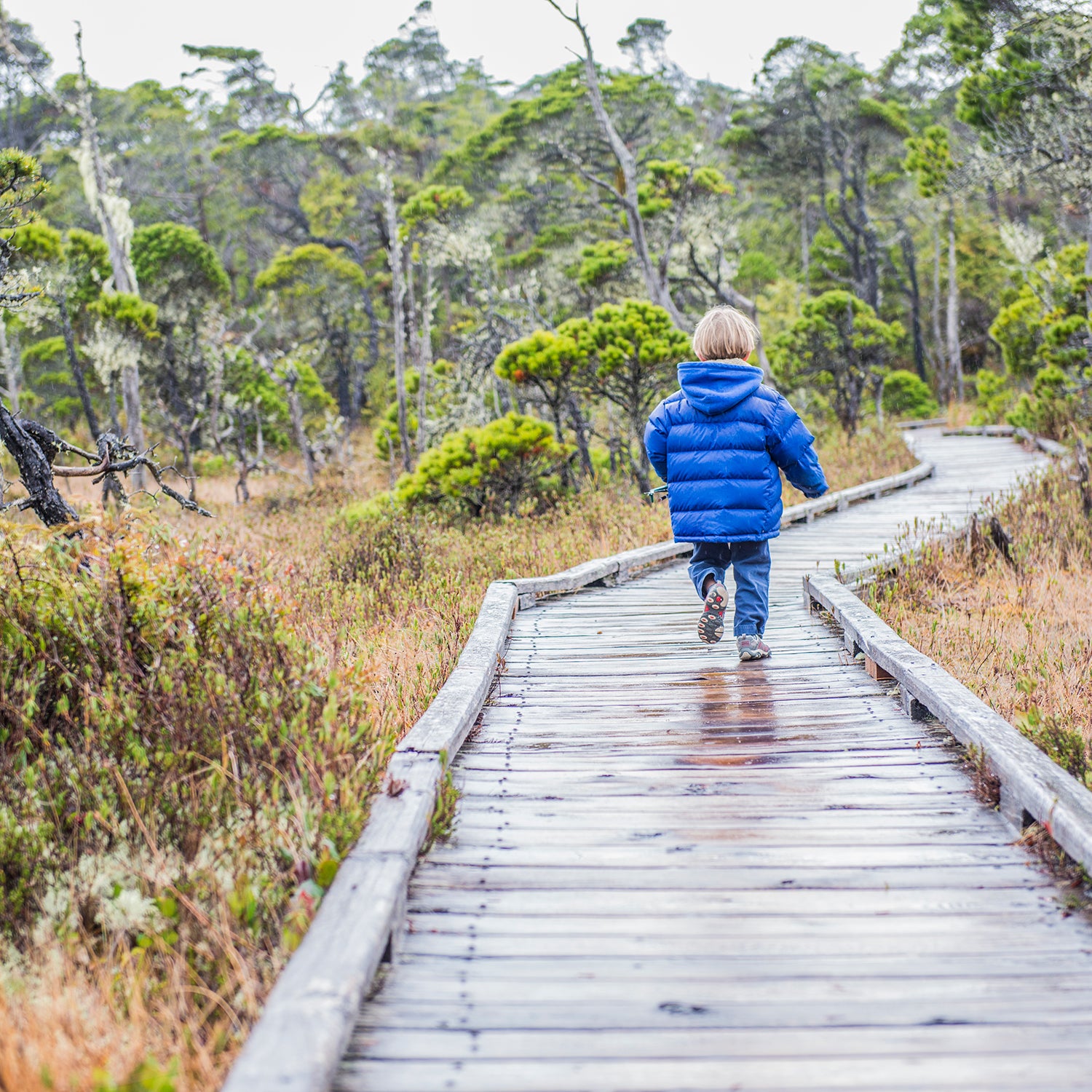On November 9, I woke, like the rest of the world, to news of the shocking election upset. The worst part was the effect it would have on my daughters. In my stepmother’s kitchen, 2,500 miles away from home, I could think only of my young girls. We’d been talking for weeks about what it would mean to elect the first woman president of the United States, but I’d completely neglected to prepare them for this outcome. I sat at the table and cried, thinking about what had been lost and all that still might be. I’d failed to prepare them for failure.
In the six weeks since, the shock has subsided and been replaced with something that feels more like shame. How did we not see this coming? That we didn’t is surely part of the problem, an alarming failure of vision. But what if there’s another, even more radical possibility we haven’t prepared for? What if by facing our failure, we learn from it, become better for it?
This is the premise behind longtime educator and author Jessica Lahey’s bestseller, The Gift of Failure: How the Best Parents Learn to Let Go So Their Children Succeed (), which came out in paperback last fall. Failure, Lahey argues, is the launchpad to growth. It’s essential to the development of healthy, happy, autonomous adults, but it can also be deeply uncomfortable. So uncomfortable that most parents will do anything to shield their children from the pain of setbacks. We—and I’m definitely guilty of this—deliver their forgotten soccer cleats to practice, play referee in their playdates, and run interference with their teachers. Though our intentions are good, we’re actually undermining our kids’ independence and resilience. The result is a generation of hyperprotective parents and overscheduled, highly stressed children who are motivated by external rewards rather than internal goals.
“We have taught our kids to fear failure, and in doing so, we have blocked the surest and clearest path to their success,” writes Lahey, who was prompted to start working on her book when she noticed that her students’ unwillingness to take chances in the classroom impeded their learning. “There’s a term for this behavior in psychiatric circles,” she writes. “It’s called enmeshment, and it’s not healthy for kids or parents…It makes for unhappy, resentful parents and ‘failure to launch’ children who move back into their bedrooms after college graduations.”
I called Lahey to find out how to nurture a greater tolerance for failure in our children and in ourselves. During our conversation, she gave me six tips on raising independent, competent adventure kids.
1. Let Small Mistakes Happen
Start small by allowing children to experience the natural consequences of their missteps. Resisting the urge to rush back to school to bring them the homework or mittens they left on the kitchen counter gives kids a chance to learn from their mistakes. If they’re behind schedule getting out the door once or twice, let that motivate them to plan smarter in the future. “Letting kids be late to school is so not the end of the world,” says Lahey. “Sure, from the perspective of a teacher, it can be irritating, but it’s the genesis of a conversation about strategies.”
When Lahey’s son was nine, he made a morning list of chores he had to complete each day to get out the door on time. “He was self-sufficient down to the minute. This was way more productive than me nagging him,” says Lahey. It also makes mornings less fraught: rather than following your children around and dictating their routine, as I do, you can simply remind them to check their list and let them go. (One caveat: when planning backcountry trips, where consequences are greater for forgetting those gloves, encourage your children to make and pack their own gear list, and have them double-check it carefully before they go out the door.)
2. Motivate with Goals, Not Rewards
Wean yourself from using incentives or bribes, as in: “If you get straight As, we’ll get you a new [fill in the blank].” “Rewards don’t work, because humans perceive them as attempts to control behavior, which undermines intrinsic motivation,” Lahey writes. Instead, back off and allow your kids to set their own goals. “New Year’s is the perfect time. Talk to your kids about what they hope to achieve, and encourage them to brainstorm steps for reaching their goals, and write them down.”
“Sometimes those goals will have nothing to do with academics or sports. The important thing is that they came from your child, not you,” she says. It helps to start by naming a few of your own goals. Over a pre–New Year’s dinner, I told my girls about my resolution to stop biting my fingernails and to floss daily. Soon they were making their own lists. It’s important to circle back to the goals once a month to see if they’re making headway or need to brainstorm other strategies.
3. Embrace Sports as Testing Grounds for Failure
It’s easy to lament the time-consuming rigidity of organized youth sports, but they do provide immediate feedback—the climbing move they missed, the pop fly they bobbled, the ski race they botched—and they are a great, safe way to experience and build tolerance for mistakes. The key is to keep athletic failures in perspective: they’re still just kids, and it’s still just sports. By keeping your cool as a spectator, you’ll help them maintain a healthy, balanced approach to athletics.
“My son runs cross-country, and he loves it,” says Lahey. “I do not attend all his meets. At one of them, my son got spiked and tripped on purpose. The rules are you have to stop the race. If I had been there, I might have been one of those moms who cried foul. What ended up happening was his team came together and pulled him back up, and he set a personal record. It was a huge formative moment. Later, he told me it was the best race of his life.” Sometimes, she notes, “coaches and refs are going to get it wrong, but that’s part of the process, too. It’s a chance to learn about other peoples’ fallibility.”
4. Quitting Isn’t the End of the World
You’ll be more willing to let them make mistakes if you’re not overly invested in their choices. “Parents often feel like they’ve got a lot of time and effort and money invested into a sport,” says Lahey, “but if you’re forcing your child to do something they’re not really interested in, think of all the things they’re not getting to experience during that time. What is the end game? To keep your kid involved in one thing at all costs because you’ve done it so long or to help your child find the thing he truly enjoys?”
5. Let Them Fight Their Own Fights
The playground or school yard is a natural place for bouncing back from mistakes. As parents, it’s tempting to wade in at the most minor infraction, but “a little roughhousing is okay,” says Lahey. “It’s incredibly important. It teaches kids where to draw the line between acceptable touch and unacceptable force and to stand up for themselves and say, ‘No, I don’t like that.’ Understanding when another child is not happy with your behavior, seeing the look on his face when you’ve gone over some social limit—these small bits of negative feedback help them become more socially competent and teach them how to be a good friend.”
6. Get Them �����ԹϺ���
Nature puts everything—our collective heartbreak and our most private of missteps—into perspective. A few days after the election, I flew home to New Mexico. I cried the whole way across the country, hiding in airport bathroom stalls. Thinking about facing my daughters’ confusion and disappointment and my own failures as a parent made my grief fresh again. But as soon as I walked in the door, I felt settled, calmer. They had cried and made thank you cards for Hillary Clinton. Now they wanted to go hiking. We spent the morning climbing ladders into and out of 800-year-old cliff dwellings in Bandelier National Monument. Out in the fresh air, watching them crouch beneath low-hanging rocks, staring up at the blackened soot from long-ago fires, the world suddenly felt very big and very old. The wildness seemed to absorb us; there was room for our joy and our disappointments. Nature can hold all of it.


